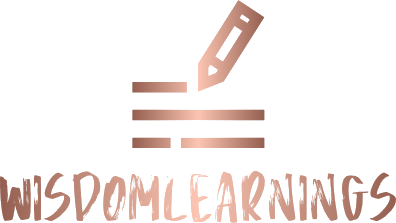Table of Contents
Starting and maintaining a successful blog involves more than just setting up a website and writing posts. It requires strategic planning, consistent effort, and a commitment to creating valuable content for your audience. This article provides a comprehensive guide on how to start a blog, build an audience, and keep your blog thriving over time.
1. Define Your Blog’s Purpose and Niche
1.1. Identify Your Goals
Before you start your blog, it’s essential to define your goals. Ask yourself what you want to achieve with your blog. Are you aiming to share your passion, build a personal brand, or create a business? Clarifying your objectives will guide your content strategy and overall direction.
1.2. Choose a Niche
Selecting a niche is crucial for attracting and retaining readers. Your niche should align with your interests and expertise while addressing a specific audience’s needs or problems. A well-defined niche helps you stand out in a crowded blogosphere and establishes your authority in that area.

2. Set Up Your Blog
2.1. Choose a Blogging Platform
Select a blogging platform that suits your needs. Popular options include WordPress, Blogger, and Wix. WordPress is highly recommended due to its flexibility, extensive plugin options, and customization capabilities. Choose a platform that you find user-friendly and aligns with your technical comfort level.
2.2. Register a Domain Name and Hosting
A domain name is your blog’s web address (e.g., www.yourblog.com). Choose a domain name that is memorable, reflects your blog’s niche, and is easy to spell. Purchase your domain and hosting from a reputable provider. Hosting services like Bluehost, SiteGround, or HostGator offer reliable options for beginners.
2.3. Design Your Blog
Design plays a significant role in attracting and retaining readers. Select a clean, professional theme that complements your content and is easy to navigate. Customize your blog’s layout, colors, and fonts to reflect your brand’s identity. Ensure that your design is mobile-responsive, as many users access blogs on mobile devices.

3. Create Valuable Content
3.1. Develop a Content Strategy
A well-thought-out content strategy helps you plan and organize your blog posts. Identify the types of content that resonate with your audience, such as how-to guides, opinion pieces, or listicles. Create an editorial calendar to schedule your posts and ensure a consistent publishing frequency.
3.2. Write Engaging and Quality Posts
Focus on creating high-quality, engaging content that provides value to your readers. Use clear and concise language, incorporate relevant keywords for SEO, and include images or multimedia to enhance your posts. Aim to address your audience’s needs, solve problems, and offer actionable insights.
3.3. Optimize for Search Engines
Search engine optimization (SEO) is essential for increasing your blog’s visibility. Conduct keyword research to identify relevant terms and phrases related to your niche. Incorporate these keywords naturally into your content, titles, and meta descriptions. Use SEO plugins like Yoast SEO for WordPress to assist with optimization.
4. Promote Your Blog
4.1. Utilize Social Media
Social media is a powerful tool for promoting your blog and reaching a broader audience. Share your blog posts on platforms like Facebook, Twitter, Instagram, and LinkedIn. Engage with your followers by responding to comments, participating in discussions, and sharing relevant content from other sources.
4.2. Network with Other Bloggers
Building relationships with other bloggers in your niche can help increase your blog’s visibility. Collaborate on guest posts, participate in blog tours, or join blogging communities and forums. Networking can lead to valuable backlinks, cross-promotional opportunities, and increased exposure.
4.3. Leverage Email Marketing
Email marketing is an effective way to keep your audience engaged and drive traffic to your blog. Create a mailing list and offer incentives, such as exclusive content or free resources, to encourage sign-ups. Regularly send newsletters featuring your latest blog posts, updates, and special offers.

5. Monitor and Analyze Performance
5.1. Use Analytics Tools
Tracking your blog’s performance is crucial for understanding what works and what needs improvement. Use tools like Google Analytics to monitor key metrics, such as page views, bounce rates, and user demographics. Analyze this data to identify trends, measure your success, and make data-driven decisions.
5.2. Adjust Your Strategy
Based on your performance data, adjust your content strategy and promotional efforts as needed. Experiment with different types of content, publishing frequencies, and marketing techniques. Continuously refine your approach to better meet your audience’s needs and achieve your blogging goals.
6. Stay Consistent and Persistent
6.1. Maintain a Regular Posting Schedule
Consistency is key to maintaining a successful blog. Stick to your editorial calendar and publish posts regularly to keep your audience engaged. Consistent posting helps build reader trust and encourages them to return for new content.
6.2. Stay Persistent and Adapt
Blogging success doesn’t happen overnight. Stay persistent and be prepared to adapt to changes in your niche, audience preferences, and blogging trends. Keep learning and evolving your skills to stay relevant and continue providing value to your readers.
Conclusion
Starting and maintaining a successful blog requires careful planning, dedication, and ongoing effort. By defining your blog’s purpose, creating valuable content, promoting effectively, and monitoring performance, you can build a blog that resonates with your audience and achieves your goals. Embrace the journey with enthusiasm, stay committed to your vision, and continuously seek opportunities for growth and improvement. With persistence and a strategic approach, your blog can become a rewarding and influential platform in the digital landscape.


